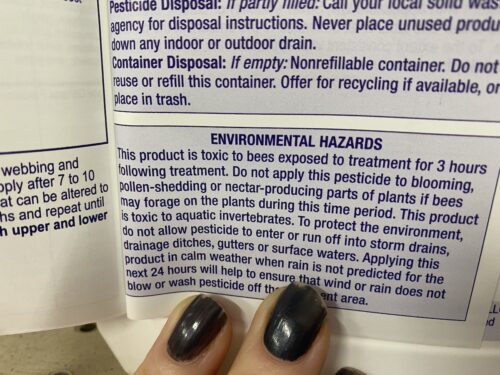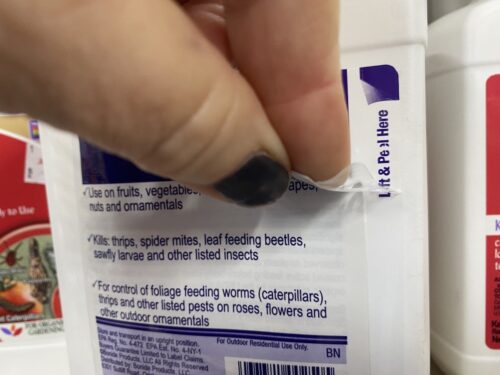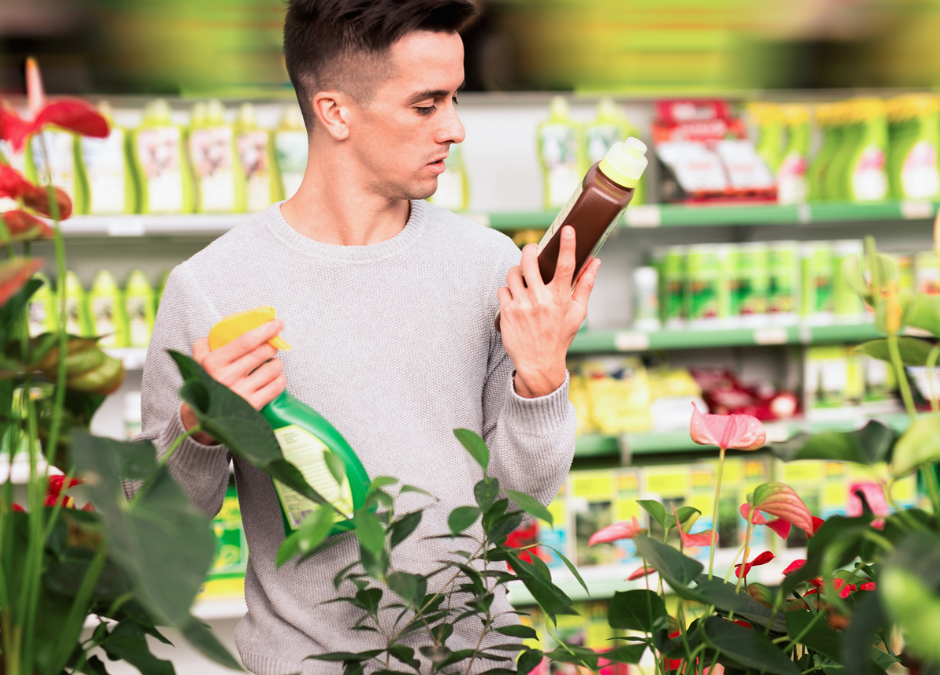When it comes to gardening and using pesticides or fungicides, one of the most crucial steps that gardeners often overlook is reading the labels on these products. The information provided on the labels is not just there for legal reasons; it serves as a valuable guide to ensure the safe and effective use of these chemicals in your garden.
Reasons to Read Labels on Pesticides, Fungicides and Fertilizers
The labels on pesticides and fungicides contain essential details that can help you make informed decisions about how, when, and where to use these products. One of the key pieces of information you can find on the labels is which plants the product is safe to use on. Different chemicals may have varying effects on different types of plants, so it is vital to check the label to avoid damaging your beloved garden greenery.
For example, we carry a great pre-emergent/post emergent product for turf called Weed Beater Complete. It works great for the prevention of weeds and helps get rid of some that you currently have. But…if you are applying it on St. Augustine, it might turn it yellow for a short period of time. The lawn will green back up, but if you didn’t read the label, it might be something that freaks you out a little bit. You might think you have something else wrong with your lawn.

Moreover, the labels also provide information on the temperatures at which the product can be safely applied. Some products may not work effectively or could even be harmful if used in extreme temperatures, so being aware of these guidelines can help you achieve the best results without causing any unintended damage.
For instance, Neem Oil is a great product for pest control, but you MUST take care not to spray when temperatures are above 85°F or you could risk burning your plant. There are many products that are like this, so I really encourage you to read before you spray. Better yet, read before you buy!
Another critical aspect to consider is whether the pesticide or fungicide is toxic to pollinators. Protecting bees, butterflies, and other pollinators is essential for maintaining a healthy ecosystem, so choosing products that are not harmful to these beneficial insects is crucial.
As an example, spinosad is an effective product that helps battle cabbage loopers and hornworms, but it can do great damage to our local bees. However, spraying when the sun is starting to tuck away for the evening will limit exposure to bees. You may still be able to use the products that would be most effective, you may just have to adjust when you apply it.


Additionally, the label will indicate the rain fastness of the product, which refers to how quickly the chemical becomes rainproof after application. This information is vital to ensure that the product remains effective even if it rains shortly after you apply it. On the flip side, some products like fertilizers may benefit if it rains after you’ve applied it, as it is generally recommended to thoroughly water after fertilizing.
Lastly, some labels may provide guidance on whether subsequent applications of the product are needed and, if so, how frequently they should be applied. Following these instructions will help you maintain the health and beauty of your garden while minimizing any negative impacts on the environment.
One last example for you, and this one is timely. Spring and fall is a given for applying weed pre-emergents, but many products recommend a third application around May. While you will most likely get a pretty good result with just a spring and fall application, if you are still struggling and battling weeds throughout the year, could that 3rd application be the key? I’m not sure, but maybe there’s a reason it’s on the label.


Taking the time to read and understand the labels on pesticides and fungicides is a simple yet essential step in responsible gardening practices. By doing so, you can protect your plants, pollinators, and the environment while achieving the desired results in your garden. Now…if the manufacturers could just figure out a new way to attach them to make it a little easier to get to the important instructions. The struggle is real, y’all! I know you know what I mean.
~The Happy Gardener, Lisa Mulroy

